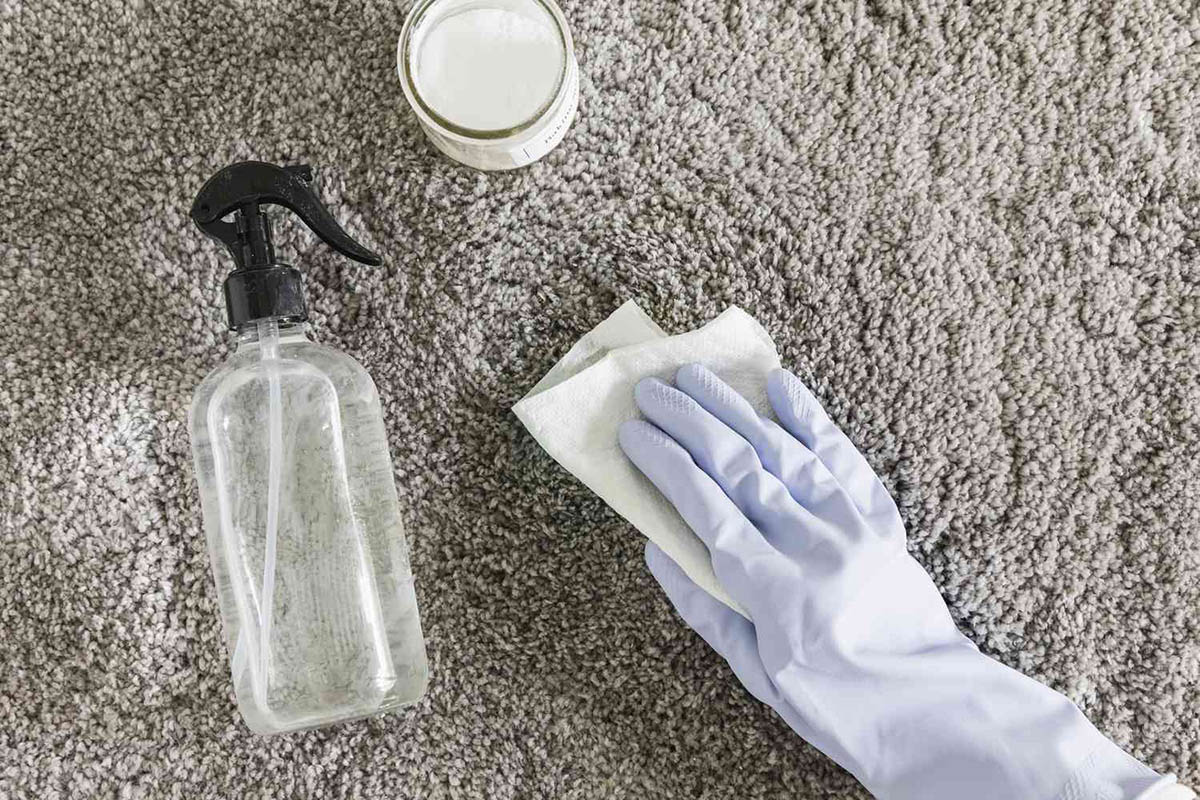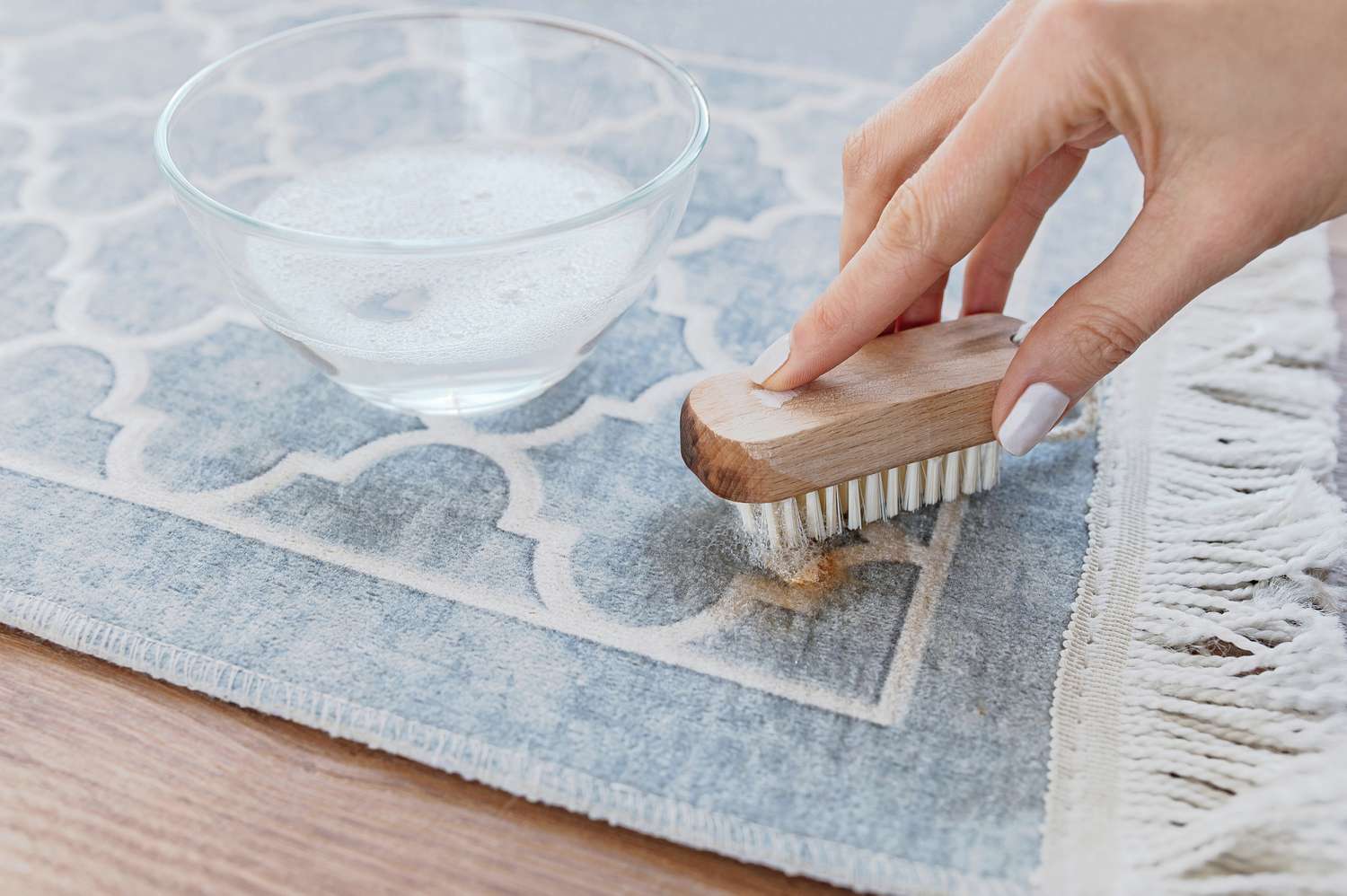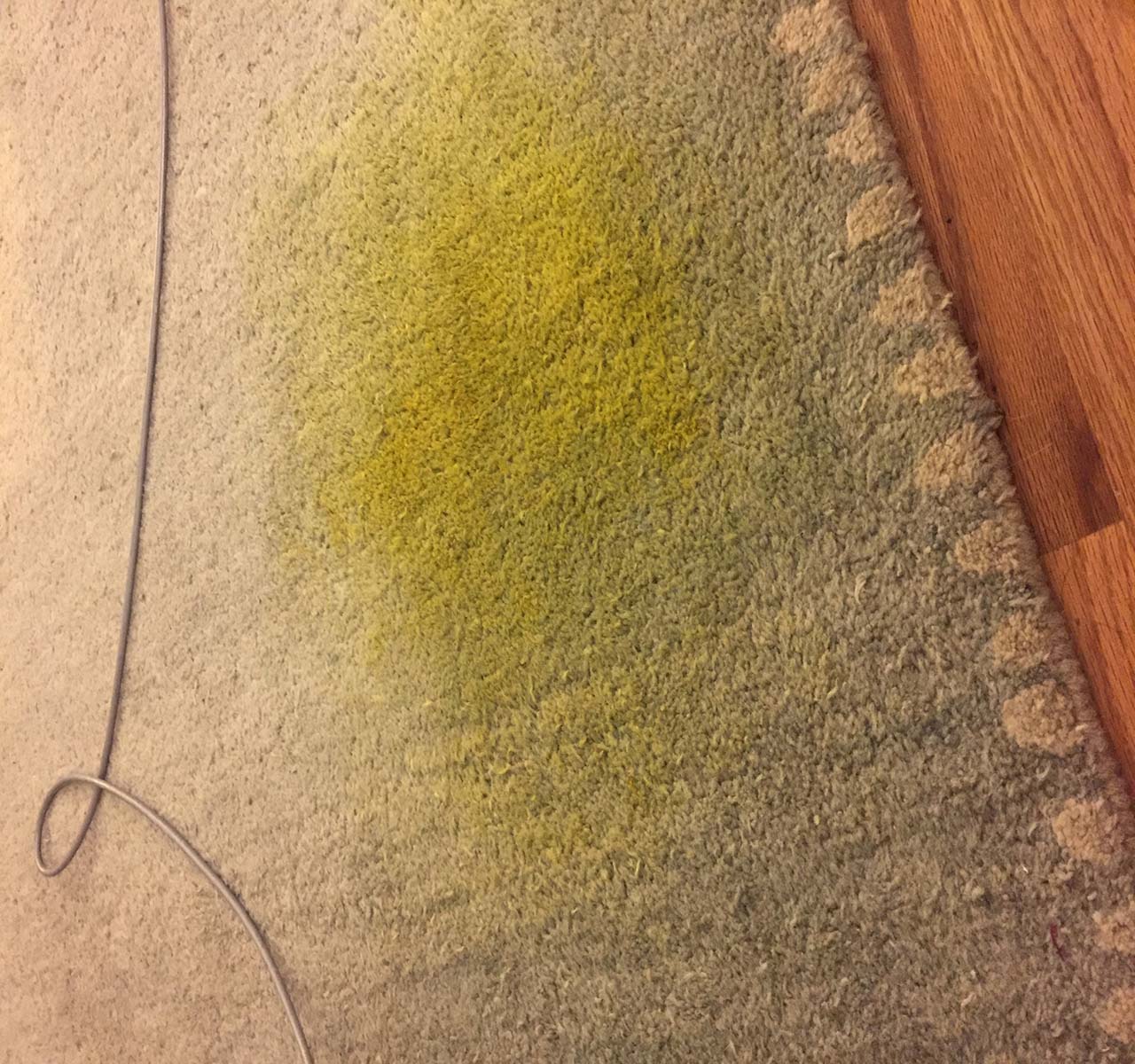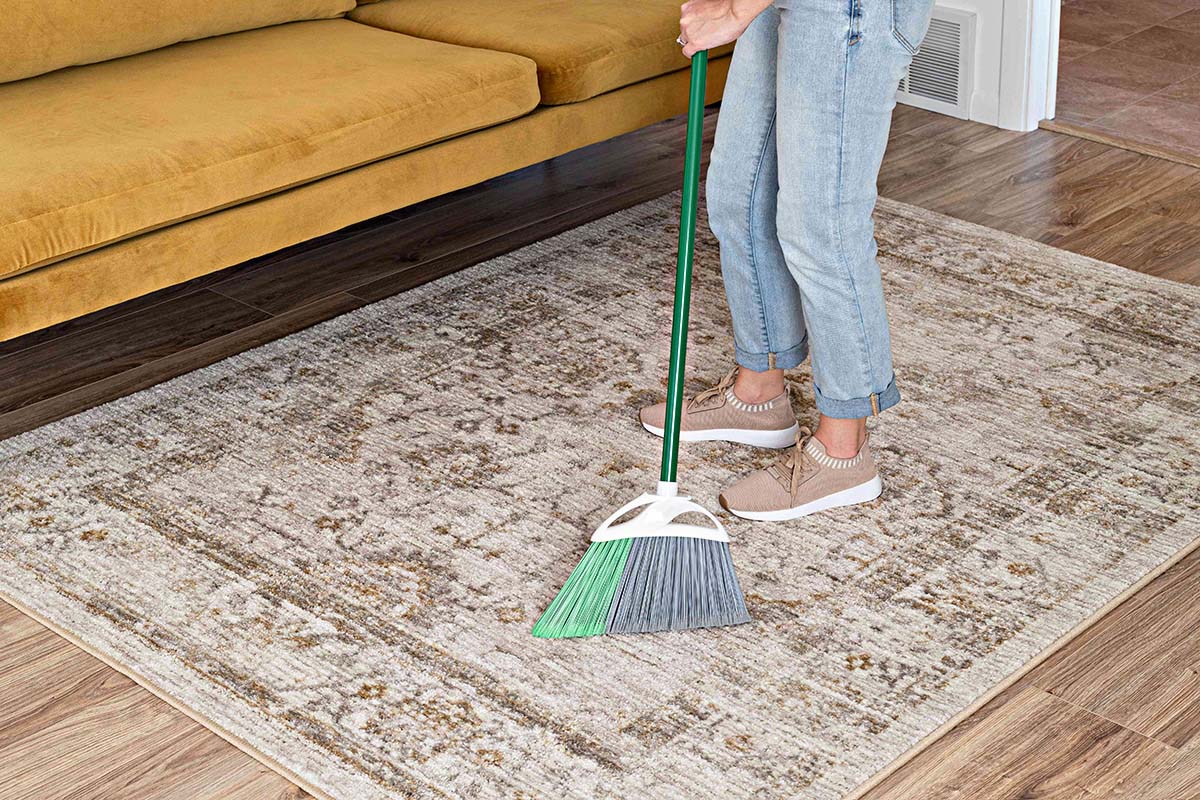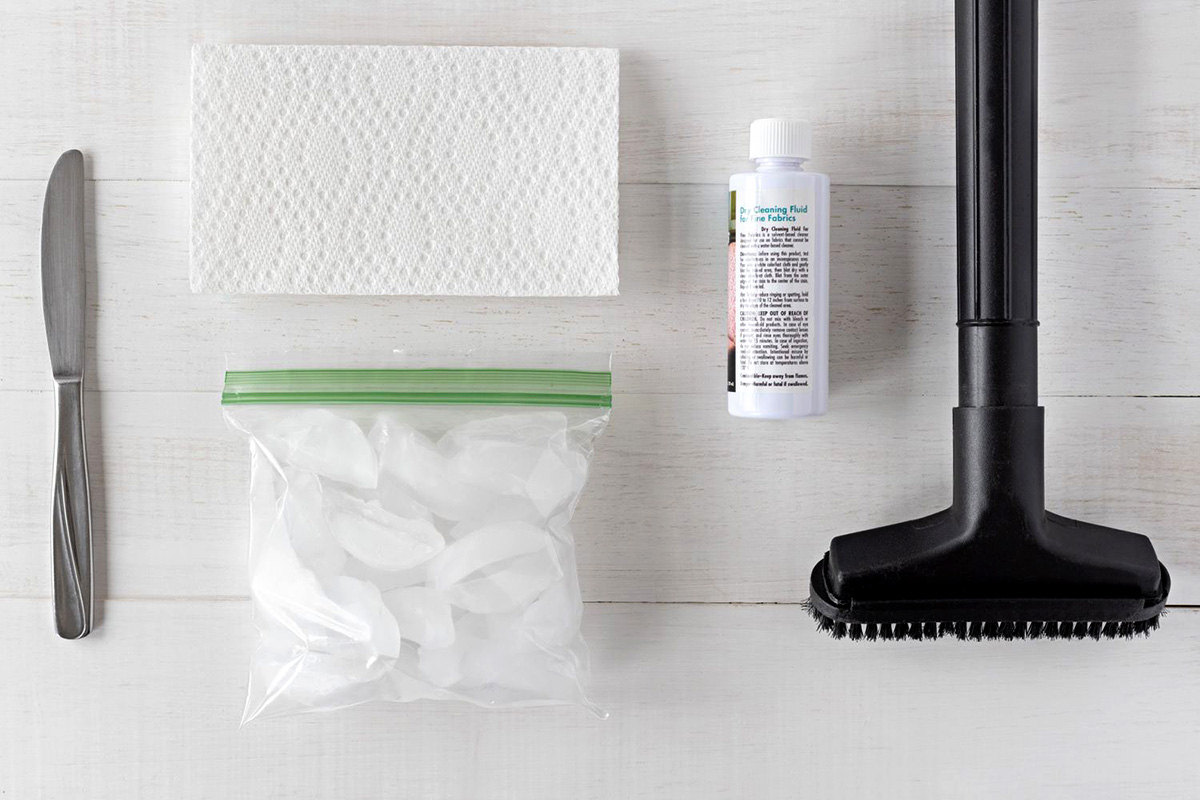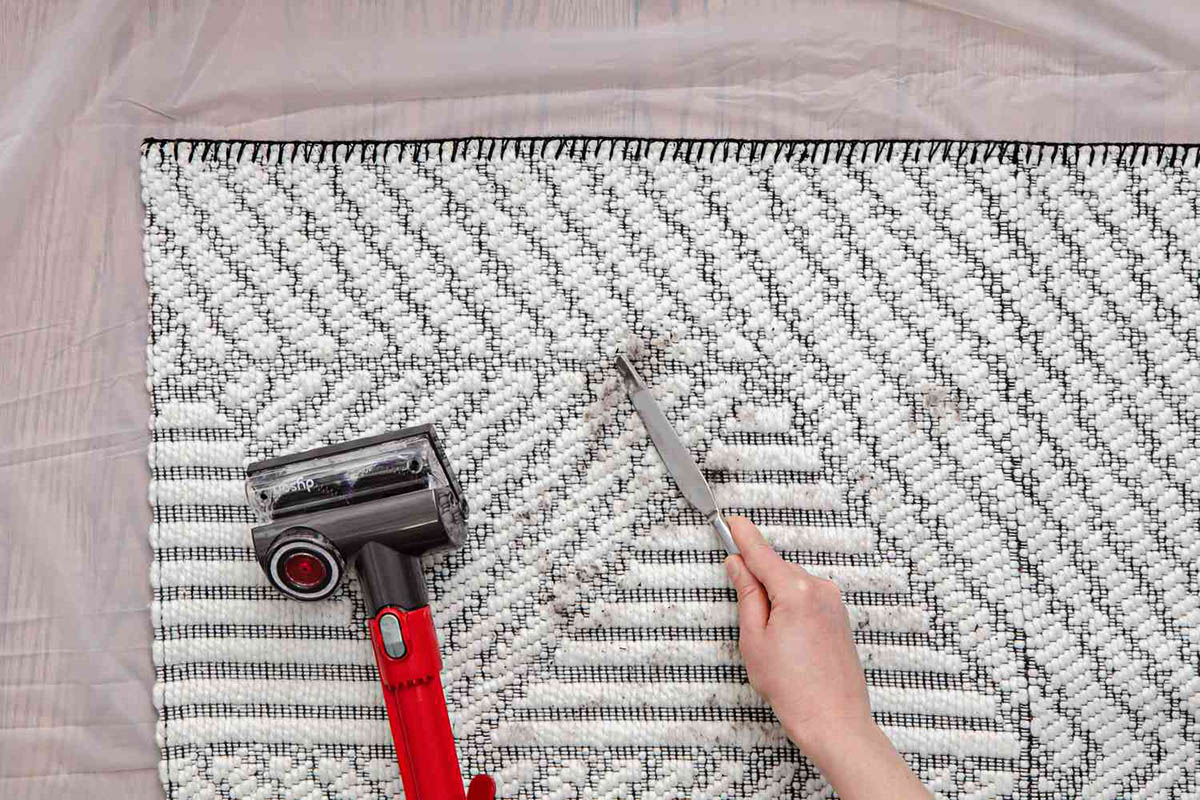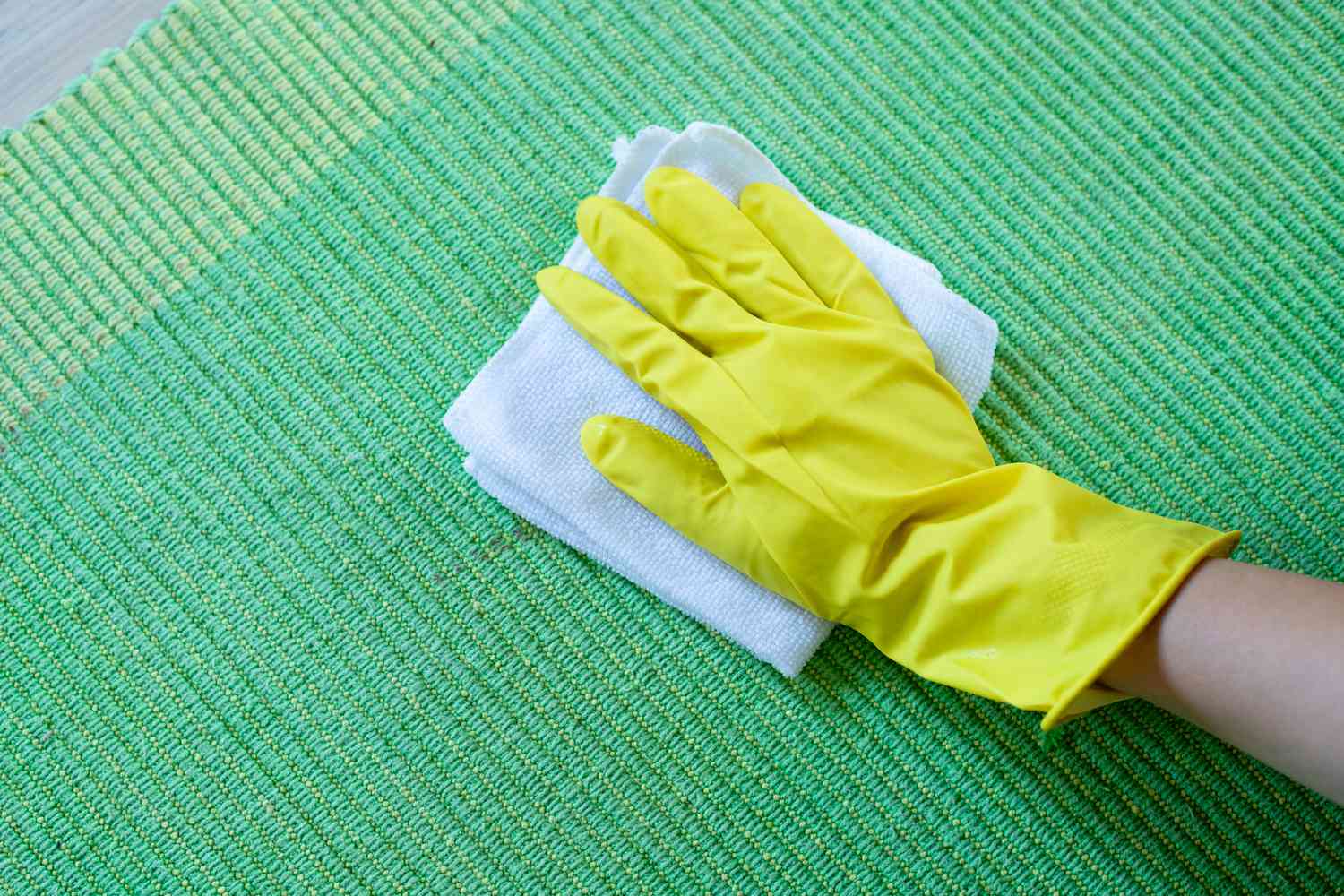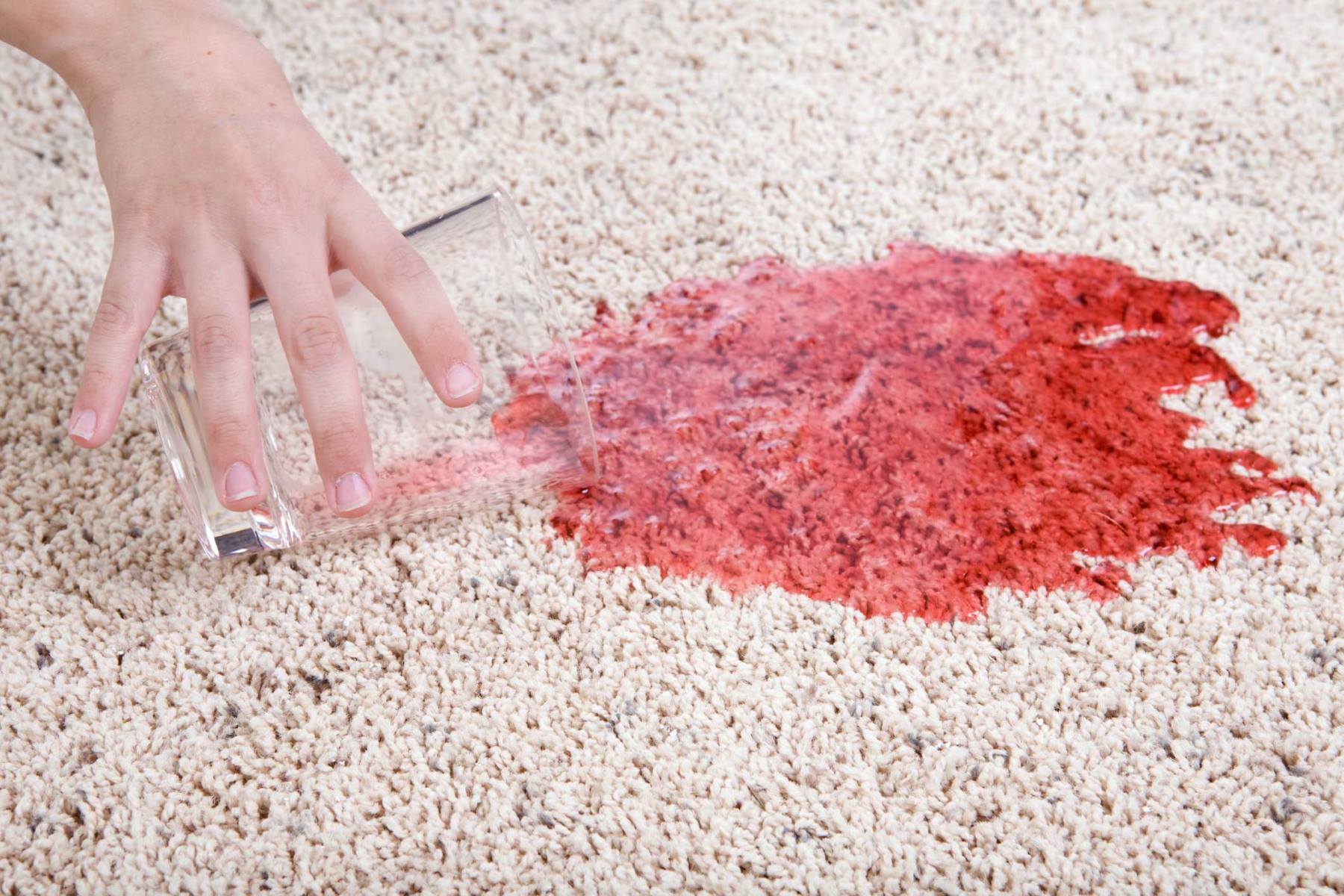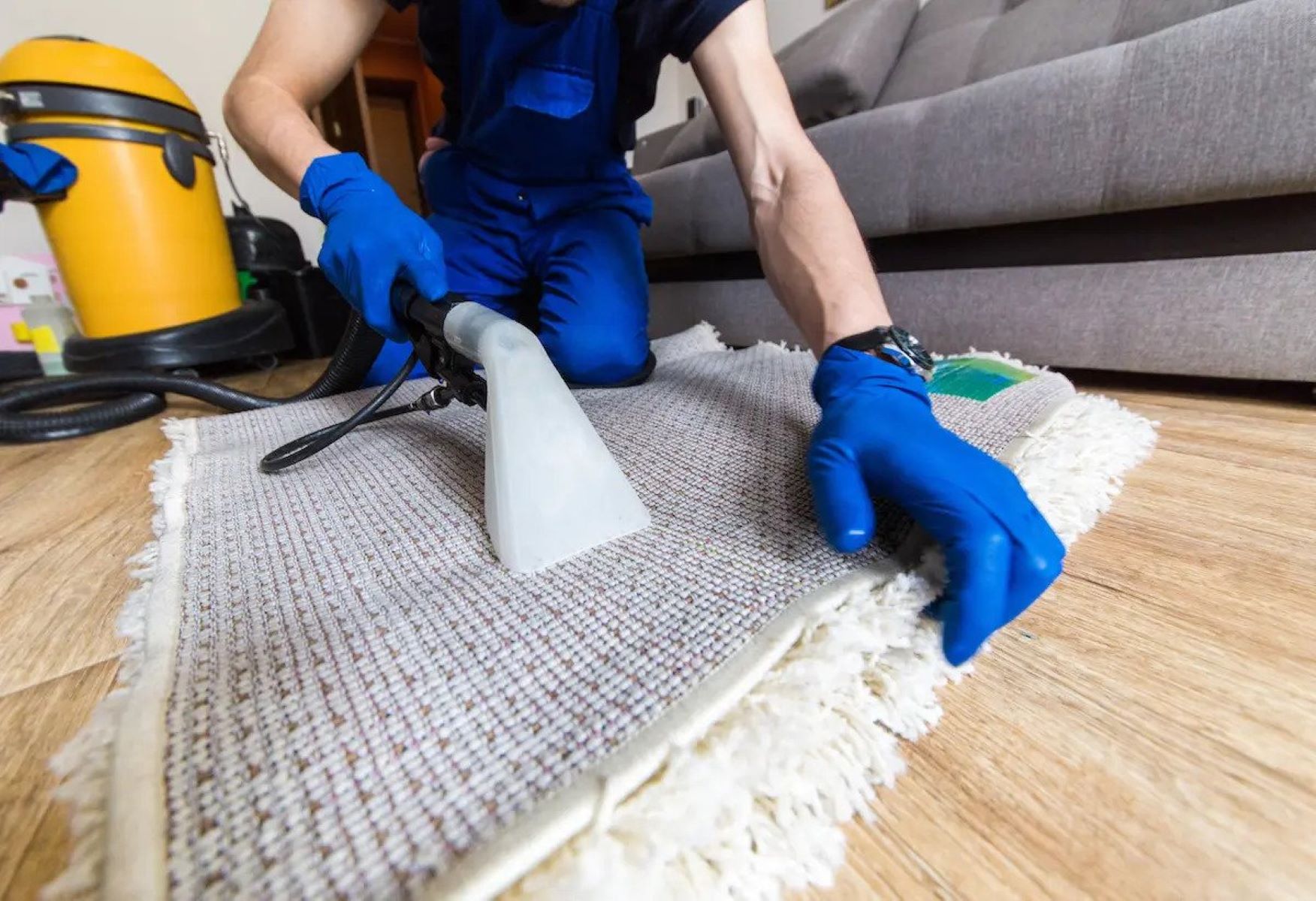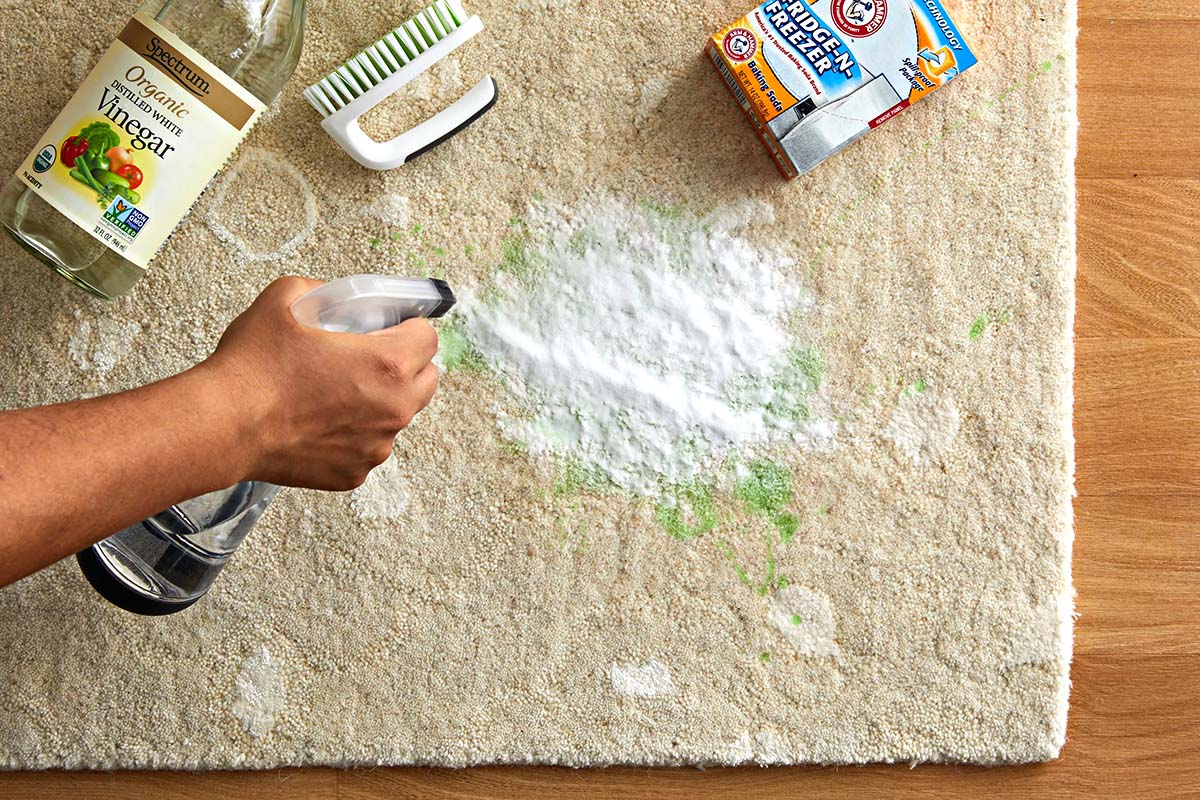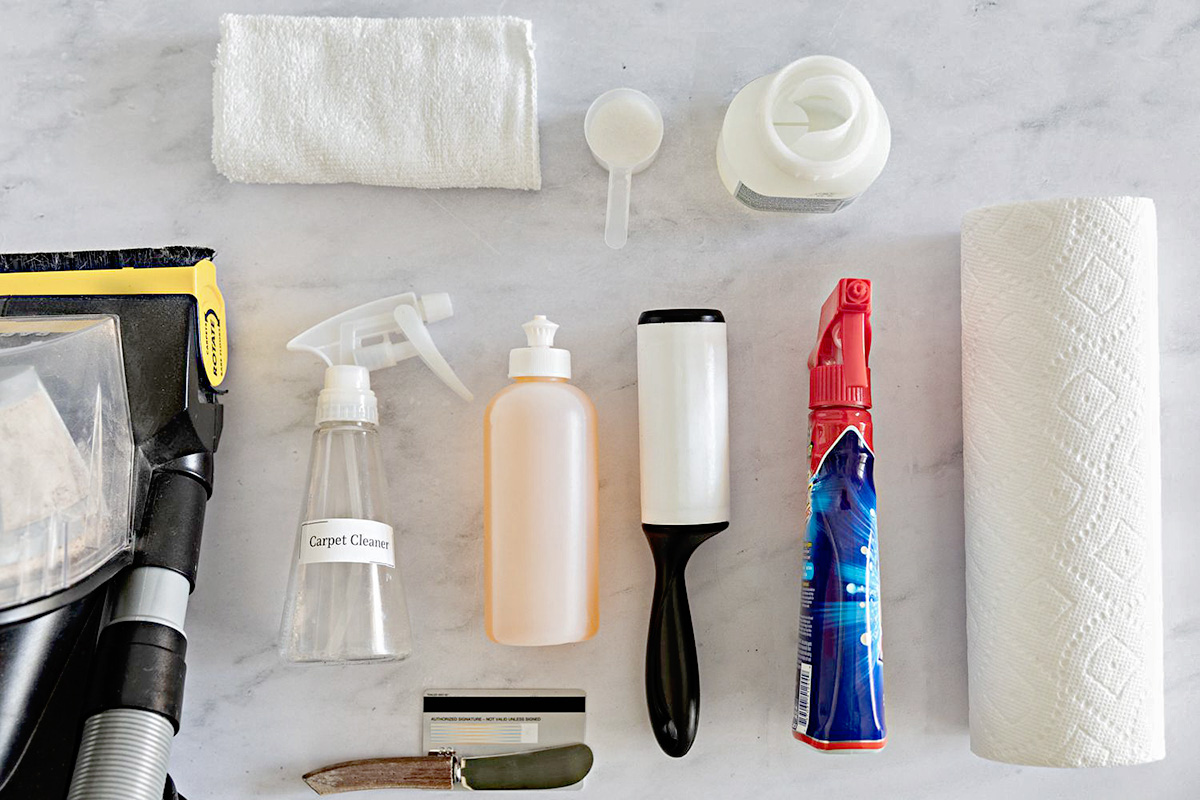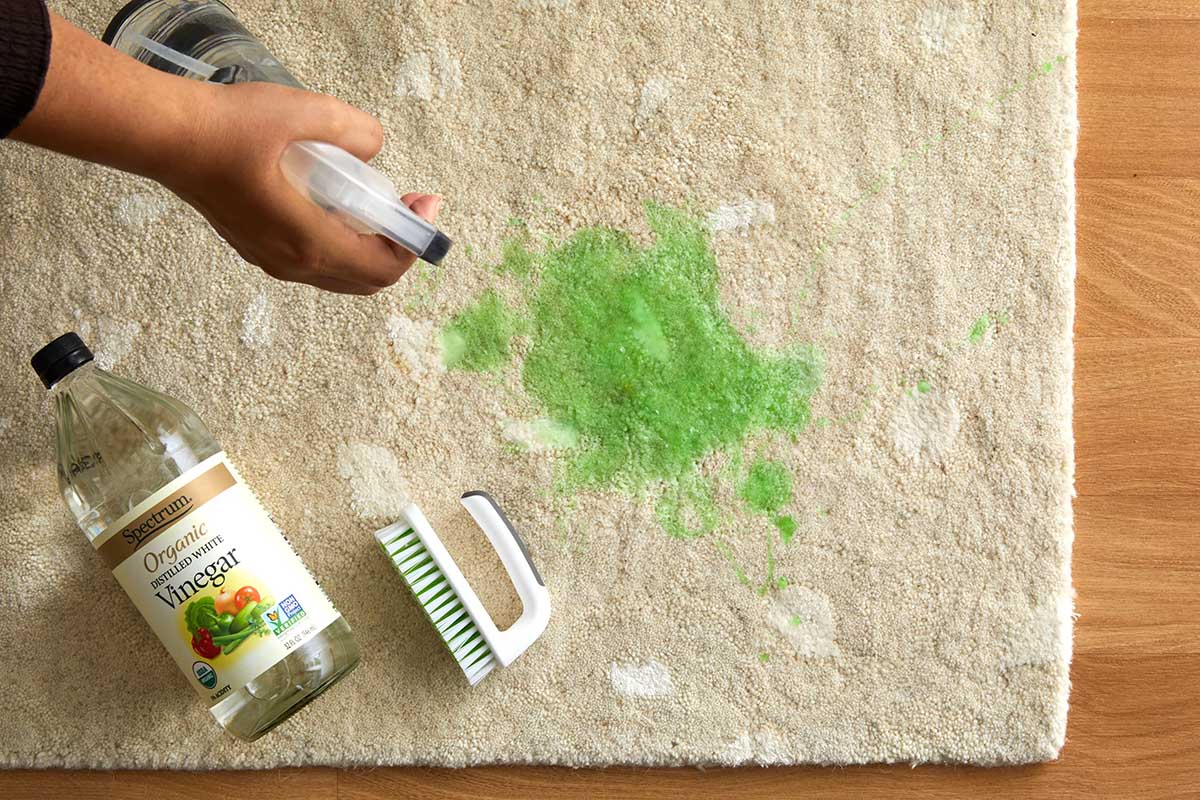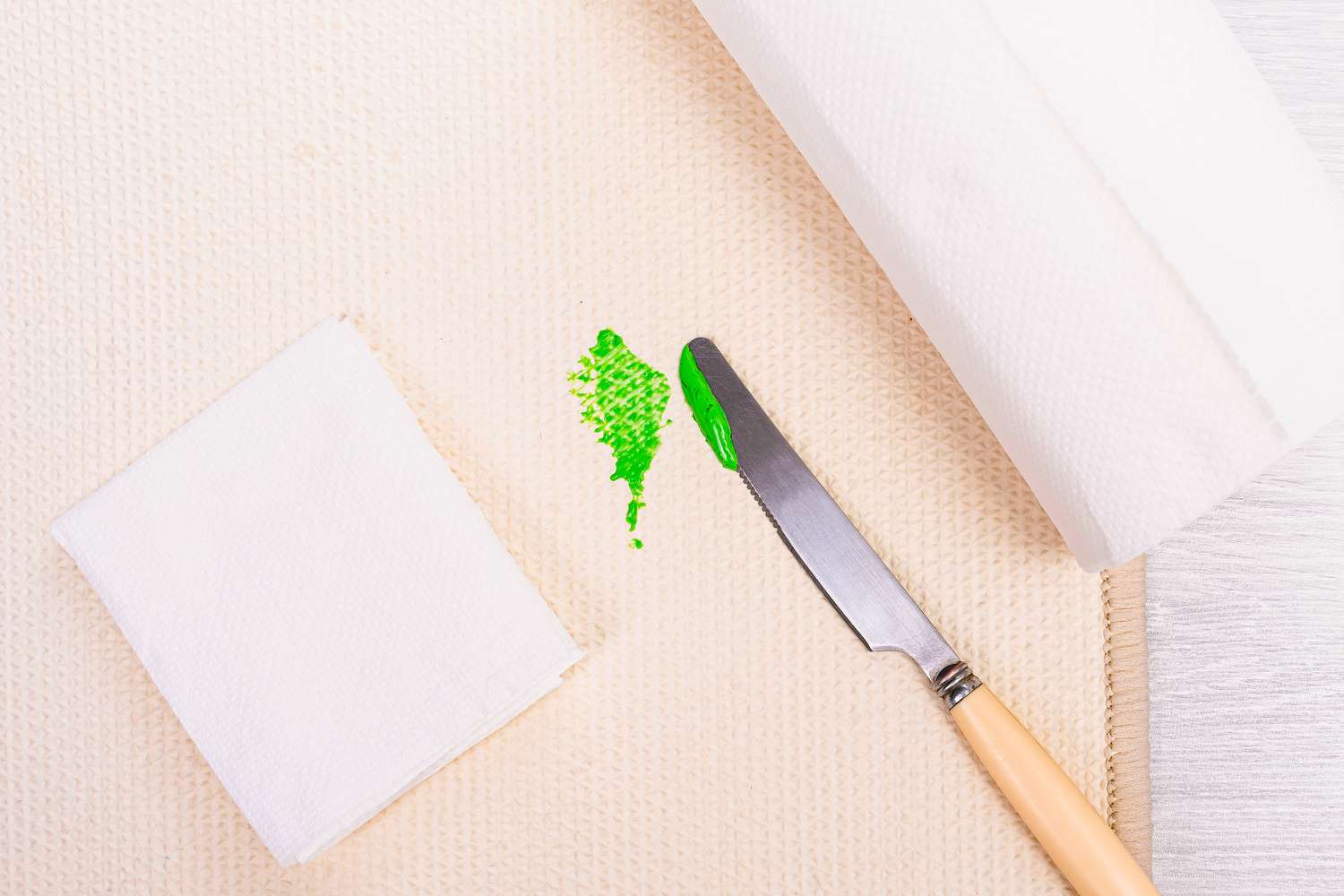

Articles
How To Get Food Coloring Out Of A Carpet
Modified: February 25, 2024
Learn how to remove food coloring stains from your carpet with these helpful articles. Find effective methods and tips to get your carpet looking clean and stain-free.
(Many of the links in this article redirect to a specific reviewed product. Your purchase of these products through affiliate links helps to generate commission for Storables.com, at no extra cost. Learn more)
Introduction
Food coloring stains on a carpet can be a frustrating sight. Whether it’s from a spilled drink or an accidental mishap during a baking session, these stains can quickly become an eyesore in your home. However, with the right knowledge and techniques, you can effectively remove food coloring stains from your carpet and restore its pristine condition.
In this article, we will explore various methods and precautions to help you get food coloring out of a carpet. From simple household ingredients to commercial carpet cleaners, we will cover a range of options to suit different types of stains and carpets. By following these steps, you can tackle those stubborn stains and bring your carpet back to life.
Key Takeaways:
- Say goodbye to stubborn food coloring stains on your carpet with effective methods like blotting, dish soap, vinegar, and more. Act quickly and follow precautions for successful stain removal.
- Prevent future stains by establishing carpet-free zones, using protective covers, and investing in stain-resistant carpets. Educate and prepare to keep your carpet vibrant and stain-free.
Read more: How To Get Carpet Staples Out
Understanding Food Coloring Stains
Before diving into the methods of removing food coloring stains from your carpet, it’s essential to understand the nature of these stains. Food coloring, with its vibrant and concentrated pigments, has the potential to leave stubborn marks on your carpet fibers.
Food coloring stains can seep deep into the carpet fibers, making them challenging to remove if not addressed promptly. This is why it’s crucial to act quickly when a spill occurs to prevent the stain from setting in and becoming permanent.
Another factor to consider is the type of food coloring used. While natural food dyes might be easier to remove, synthetic food coloring can be more stubborn and may require different cleaning techniques.
It’s important to note that not all carpet materials are the same, and some may be more prone to staining or discoloration than others. Before attempting any stain removal method, it’s wise to test it on a small, inconspicuous area of the carpet to ensure no damage or discoloration occurs.
Now that we have a better understanding of food coloring stains let’s move on to the precautions you should take before attempting to remove them.
Precautions before Removing Food Coloring
Before you start the process of removing food coloring stains from your carpet, it’s important to take a few precautions to ensure the safety of the carpet and prevent any further damage:
- Act quickly: The longer food coloring sits on the carpet, the harder it becomes to remove. As soon as you notice a spill, promptly attend to it to prevent the stain from setting and becoming more difficult to remove.
- Blot, don’t rub: When dealing with a food coloring stain, resist the urge to scrub or rub it vigorously. This can spread the stain and push it further into the carpet fibers. Instead, gently blot the stain with a clean cloth or paper towel to absorb as much of the coloring as possible.
- Avoid heat: Heat can set the stain, making it harder to remove. Avoid using hot water or applying heat sources, such as hairdryers, to the stained area until after the stain has been successfully removed.
- Use color-safe products: Before applying any cleaning solutions or chemicals to your carpet, check for colorfastness. Test the solution on a small, inconspicuous area of the carpet to ensure it doesn’t cause discoloration or damage.
- Read and follow instructions: If you decide to use a commercial carpet cleaner or stain remover, carefully read and follow the instructions provided by the manufacturer. Not all products are suitable for all types of stains or carpets, so it’s important to select the right product and use it correctly.
By taking these precautions, you can minimize the risk of further damage to your carpet while effectively removing food coloring stains. Now let’s explore some methods for removing these stubborn stains from your carpet.
Method 1: Blotting and Absorbing the Stain
One of the first steps in removing food coloring stains from your carpet is to blot and absorb as much of the stain as possible. This method is most effective for fresh stains and can help prevent the stain from spreading or setting further into the carpet fibers.
Here’s how you can use the blotting and absorbing method to remove food coloring stains:
- Act quickly: As soon as the spill occurs, grab a clean cloth or paper towel and gently blot the stained area. Make sure to avoid rubbing or scrubbing, as this can spread the stain and make it harder to remove.
- Change cloths: As the cloth or paper towel becomes saturated with the food coloring, switch to a fresh one to continue absorbing the excess liquid. Repeat this process until no more color is being transferred to the cloth.
- Prepare a cleaning solution: Once you’ve blotted up as much of the liquid as possible, you can prepare a simple cleaning solution. Mix a few drops of mild dishwashing detergent with warm water.
- Apply the solution: Dip a clean cloth or sponge into the soapy water and gently blot the stained area. Work from the outside edge of the stain towards the center to prevent spreading.
- Blot and rinse: After applying the cleaning solution, continue to blot the stain with a fresh cloth or sponge to help lift the remaining color. Then, rinse the area with clean water to remove any detergent residue.
- Dry the area: Finally, pat the area dry with a clean towel or paper towels. Avoid walking on the damp carpet until it’s completely dry to prevent any further damage or re-soiling.
By quickly blotting and absorbing the stain, followed by a gentle cleaning solution, you can effectively remove food coloring stains from your carpet. However, if the stain persists, don’t worry. There are additional methods we can explore. Let’s move on to the next method.
Method 2: Using Dishwashing Detergent Solution
If the blotting and absorbing method didn’t completely remove the food coloring stain from your carpet, you can try using a dishwashing detergent solution. Dish soap is known for its ability to break down grease and stains, making it a useful option for tackling stubborn food coloring stains.
Here’s how you can use a dishwashing detergent solution to remove food coloring stains from your carpet:
- Prepare the solution: In a bowl, mix a teaspoon of mild dishwashing detergent with a cup of warm water. Stir the solution gently to create a soapy mixture.
- Test on a small area: Before applying the solution to the stained area, test it on a small, inconspicuous part of the carpet to ensure it doesn’t cause any damage or discoloration.
- Apply to the stain: Dip a clean cloth or sponge into the dishwashing detergent solution and gently blot the food coloring stain. Work from the outside edge of the stain towards the center, being careful not to rub or scrub vigorously.
- Continue blotting: As you apply the detergent solution, continue blotting the stain to lift the color from the carpet fibers. You may need to switch to a fresh cloth or rinse and reapply the solution as necessary.
- Rinse with clean water: After treating the stain, rinse the area with clean water to remove any soap residue. Gently blot the area with a clean cloth or sponge to absorb the excess water.
- Dry the area: Once the stain is removed and the area is rinsed, pat it dry with a clean towel or paper towels. Avoid walking on the damp carpet until it’s completely dry.
This dishwashing detergent solution can be a powerful tool in removing food coloring stains from your carpet. However, if the stain still persists, there are alternative methods to try. Let’s move on to the next technique.
Read more: How To Get Syrup Out Of A Carpet
Method 3: Applying Vinegar and Baking Soda Paste
If you’re dealing with a stubborn food coloring stain on your carpet, you can turn to the powerful combination of vinegar and baking soda. This method can help break down the stain and lift the color from the carpet fibers.
Here’s how you can create and use a vinegar and baking soda paste to remove food coloring stains from your carpet:
- Create the paste: In a small bowl, mix equal parts vinegar and baking soda to create a thick paste. The bubbling reaction may occur, so allow the mixture to settle before using it.
- Test on a small area: Before applying the paste to the stained area, test it on a small, inconspicuous part of the carpet to ensure it doesn’t cause any damage or discoloration.
- Apply the paste: Using a clean cloth or sponge, apply the vinegar and baking soda paste directly to the food coloring stain. Gently rub the paste into the carpet fibers, working from the outside edge of the stain towards the center.
- Allow it to sit: Once the paste is evenly applied, let it sit on the stained area for about 30 minutes. This allows the paste to penetrate the stain and break it down.
- Blot and rinse: After the paste has had time to work, use a clean cloth or sponge to blot the area, lifting the paste and color from the carpet fibers. Rinse the area with clean water to remove any residue.
- Dry the area: Once the stain is removed and the area is rinsed, pat it dry with a clean towel or paper towels. Avoid walking on the damp carpet until it’s completely dry.
The vinegar and baking soda paste can be an effective method for removing food coloring stains from your carpet. However, if the stain persists, there are still more methods to try. Let’s move on to the next technique.
Blot the stain with a clean cloth to absorb as much of the food coloring as possible. Mix 1 tablespoon of dish soap with 2 cups of warm water and blot the stain with the solution. Repeat until the stain is gone, then blot with clean water and dry with a clean cloth.
Method 4: Utilizing Hydrogen Peroxide
If the previous methods haven’t completely eliminated the food coloring stain from your carpet fibers, you can try using hydrogen peroxide. Hydrogen peroxide is a mild bleaching agent that can help break down and lift stubborn stains.
Here’s how you can use hydrogen peroxide to remove food coloring stains from your carpet:
- Prepare the solution: Start by diluting hydrogen peroxide with water. Mix equal parts hydrogen peroxide and water in a spray bottle or a bowl. For example, you can mix 1 part hydrogen peroxide with 1 part water.
- Test on a small area: Before applying the solution to the stained area, test it on a small, inconspicuous part of the carpet to ensure it doesn’t cause any damage or bleaching.
- Apply the solution: Spray or pour the diluted hydrogen peroxide solution directly onto the food coloring stain. Alternatively, you can dampen a clean cloth with the solution and gently blot the stained area.
- Allow it to sit: Let the hydrogen peroxide solution sit on the stain for about 10-15 minutes. This allows it to penetrate the stain and start breaking it down.
- Blot and rinse: After the solution has had time to work, use a clean cloth or sponge to blot the area, lifting the dissolved stain and hydrogen peroxide mixture from the carpet fibers. Rinse the area with clean water to remove any residue.
- Dry the area: Once the stain is removed and the area is rinsed, pat it dry with a clean towel or paper towels. Allow the carpet to air dry completely before walking on it.
Hydrogen peroxide can be an effective stain remover for food coloring stains. However, as it is a bleaching agent, it’s important to test it on a small area and use caution to avoid causing any damage to your carpet fibers. If the stain persists or if you’re concerned about using bleaching agents on your carpet, there are alternative methods to explore. Let’s move on to the next technique.
Method 5: Employing Rubbing Alcohol
If you’re looking for an alternative method to remove food coloring stains from your carpet, you can consider using rubbing alcohol. Rubbing alcohol is known for its ability to dissolve and lift stubborn stains, making it a useful tool for tackling food coloring stains.
Here’s how you can use rubbing alcohol to effectively remove food coloring stains from your carpet:
- Check for colorfastness: Before using rubbing alcohol on the stained area, test it on a small, inconspicuous part of the carpet to ensure it doesn’t cause any damage or discoloration.
- Blot the stain: If the stain is fresh, start by blotting the affected area with a clean cloth or paper towel to absorb as much of the color as possible.
- Apply rubbing alcohol: Dampen a clean cloth or sponge with rubbing alcohol and gently blot the food coloring stain. Work from the outside edge of the stain towards the center, being careful not to rub or scrub vigorously.
- Continue blotting: As you apply the rubbing alcohol, continue blotting the stain to lift the color from the carpet fibers. You may need to switch to a fresh cloth or rinse and reapply the rubbing alcohol as necessary.
- Rinse with clean water: Once the stain is removed, rinse the area with clean water to remove any residue from the rubbing alcohol. Gently blot the area with a clean cloth or sponge to absorb the excess moisture.
- Dry the area: Pat the area dry with a clean towel or paper towels and allow the carpet to air dry completely. Avoid walking on the damp carpet until it’s completely dry to prevent any re-soiling or damage.
Rubbing alcohol can be an effective solution for removing food coloring stains from your carpet. However, it’s always important to test it on a small area first and use caution to avoid damaging the carpet fibers. If the stain persists or if you prefer to use alternative methods, there are still more techniques to explore. Let’s move on to the next method.
Method 6: Using Commercial Carpet Cleaner
If the food coloring stain on your carpet proves to be stubborn and resistant to previous methods, using a commercial carpet cleaner can be a viable option. These cleaners are specifically designed to tackle tough stains and are readily available in stores or online.
Here’s how you can use a commercial carpet cleaner to remove food coloring stains from your carpet:
- Select a suitable carpet cleaner: Choose a commercial carpet cleaner that is formulated for stain removal and safe to use on your specific carpet material. Read the instructions provided by the manufacturer before use.
- Vacuum the carpet: Before applying the carpet cleaner, vacuum the entire carpeted area to remove any loose dirt and debris. This helps ensure that the cleaner can penetrate the stain more effectively.
- Prepare the cleaner: Follow the instructions provided with the commercial carpet cleaner to prepare the solution. This typically involves diluting the cleaner with water as directed.
- Test on a small area: Before applying the cleaner to the stained area, test it on a small, inconspicuous part of the carpet to ensure it doesn’t cause any damage or discoloration.
- Apply the cleaner: Following the cleaner’s instructions, apply the solution directly to the food coloring stain. Use a clean cloth, sponge, or a carpet cleaning machine with appropriate attachments to work the cleaner into the stain.
- Follow the recommended time frame: Allow the cleaner to sit on the stain for the recommended time specified by the manufacturer. This allows the cleaner to break down the food coloring and lift it from the carpet fibers.
- Blot or rinse: Depending on the instructions provided by the cleaner, blot the stained area with a clean cloth or sponge, or rinse the area with clean water to remove any residue from the cleaner.
- Dry the area: After treating the stain, pat the area dry with a clean towel or paper towels. Allow the carpet to air dry completely before walking on it.
Commercial carpet cleaners can be highly effective in removing stubborn food coloring stains from your carpet. However, always follow the manufacturer’s instructions and precautions to ensure safe and efficient use. If the stain persists or if you prefer to try other methods, we have more techniques to explore. Let’s move on to the next section.
Read more: How To Get Coffee Out Of A Carpet
Cleaning Up Residual Stains and Odor
After removing the food coloring stain from your carpet using the previous methods, you may still notice residual stains or lingering odors. To ensure that your carpet looks and smells fresh, there are additional steps you can take to clean up any remaining traces.
- Blot with water: If there are any residual stains or discoloration from the food coloring, you can blot the area with clean water to help dilute and remove the remaining color. Gently blot the area with a clean cloth or sponge, working from the outer edges of the stain towards the center.
- Apply a carpet stain remover: If the residual staining persists, you can try using a carpet stain remover specifically formulated for colored stains. Follow the instructions provided with the stain remover and gently work it into the affected area. Rinse the area with clean water and blot dry.
- Deodorize with baking soda: To tackle any lingering odor from the food coloring, you can sprinkle baking soda liberally over the affected area. Allow it to sit for a few hours or overnight to absorb the odor. Then, vacuum the baking soda thoroughly.
- Steam clean the carpet: If the odor persists or if you want to give your carpet a thorough cleaning, consider using a steam cleaner. Steam cleaning can help remove any remaining stains or odors from your carpet. Follow the instructions provided with the steam cleaner and ensure that your carpet is suitable for steam cleaning.
- Professional carpet cleaning: If the stain or odor still lingers after attempting these methods, or if you prefer professional assistance, it may be worthwhile to hire a professional carpet cleaning service. These professionals have specialized equipment and expertise to deep clean and restore your carpet to its original condition.
By taking these steps to clean up any residual stains and odors, you can ensure that your carpet looks and smells fresh after removing the food coloring stain. Remember to always test any cleaning solutions or methods on a small, inconspicuous area of the carpet to ensure they don’t cause any damage or discoloration.
Now, let’s explore some preventive measures to help avoid future food coloring stains on your carpet.
Preventing Future Stains
While accidents happen, there are steps you can take to minimize the chances of food coloring stains on your carpet. By adopting these preventive measures, you can protect your carpet and maintain its pristine condition:
- Act quickly: As soon as a spill occurs, whether it’s food coloring or any other liquid, act promptly. Use a clean cloth or paper towel to blot the spill and absorb as much of the liquid as possible. The faster you address the spill, the less likely it is to penetrate deep into the carpet fibers and leave a stain.
- Establish carpet-free zones: Consider creating specific areas in your home that are carpet-free zones, especially in areas where food coloring or other potentially staining substances are frequently used. This can be designated as an area for crafts, cooking, or any activity that involves the use of colorful liquids. Use washable rugs or mats in these areas as a protective barrier against spills.
- Use protective covers: If you have carpets in areas prone to spills or stains, such as dining rooms or children’s play areas, consider using protective covers or plastic mats. These can be easily cleaned and provide an extra layer of protection against food coloring or other staining agents.
- Invest in stain-resistant carpet: When purchasing or replacing carpets, opt for stain-resistant varieties. Stain-resistant carpets are specially treated to repel spills and stains, making them easier to clean and less prone to permanent staining.
- Set rules and educate everyone: Clearly communicate with family members, children, or housemates about the importance of being cautious around carpets. Educate them about the potential damage that food coloring and other staining substances can cause and encourage them to take precautions and clean up any spills immediately.
- Keep cleaning supplies handy: Store basic carpet-cleaning supplies, such as clean cloths, carpet stain removers, and a carpet cleaner, in an easily accessible area. Having these supplies readily available will enable you to tackle spills quickly and prevent them from becoming permanent stains.
By implementing these preventive measures, you can reduce the likelihood of food coloring stains and protect the longevity and appearance of your carpet. However, accidents can still happen. In such cases, refer back to the methods outlined in this article to effectively remove any food coloring stains from your carpet.
Remember to always test any cleaning solutions on a small, inconspicuous area of the carpet and follow the instructions provided with any commercial carpet cleaning products. It’s also important to regularly vacuum and maintain your carpet to prevent dirt buildup and prolong its lifespan.
By taking proactive steps and staying prepared, you can enjoy a stain-free and vibrant carpet for years to come.
Conclusion
Food coloring stains on your carpet can be a frustrating and unsightly problem, but with the right techniques and preventive measures, you can successfully remove these stains and restore the beauty of your carpet. Throughout this article, we have explored various methods for tackling food coloring stains, including blotting and absorbing the stain, using dishwashing detergent solution, applying vinegar and baking soda paste, utilizing hydrogen peroxide, employing rubbing alcohol, and utilizing commercial carpet cleaners.
It’s important to note that each method may work differently depending on the type of stain and the material of your carpet. Therefore, it’s crucial to test any cleaning solutions on a small, inconspicuous area before applying them to the stained area.
In addition to the methods discussed, we have also covered precautions to take before removing food coloring stains, such as acting quickly, avoiding heat, and using color-safe products. Furthermore, we discussed how to clean up residual stains and odor to ensure your carpet looks and smells fresh after stain removal.
Prevention is key when it comes to maintaining a stain-free carpet. By acting quickly, establishing carpet-free zones, using protective covers, investing in stain-resistant carpets, and educating everyone in your household about the importance of preventing spills, you can significantly reduce the likelihood of food coloring stains on your carpet.
Remember to regularly vacuum and maintain your carpet to prevent dirt buildup, as this can make stain removal more challenging. By adopting these preventive measures and being proactive in stain removal, you can keep your carpet in excellent condition and enjoy its beauty for years to come.
By following the methods and tips outlined in this article, you can confidently tackle food coloring stains on your carpet and restore its pristine appearance. Say goodbye to unsightly stains and hello to a fresh and vibrant carpet!
Frequently Asked Questions about How To Get Food Coloring Out Of A Carpet
Was this page helpful?
At Storables.com, we guarantee accurate and reliable information. Our content, validated by Expert Board Contributors, is crafted following stringent Editorial Policies. We're committed to providing you with well-researched, expert-backed insights for all your informational needs.
